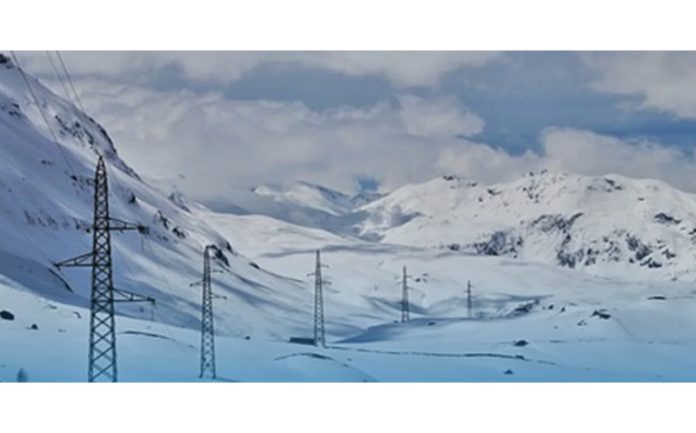The Government has approved the establishment of a transmission line, amounting to a substantial investment of Rs 20,773.70 crore, dedicated to the transmission of solar power generated by a mega 13 GW renewable energy project in Ladakh. The transmission infrastructure responsible for this will traverse through Himachal Pradesh and Punjab until it reaches Kaithal in Haryana, where it will be seamlessly integrated into the national grid. This monumental endeavour stands as an unparalleled feat globally, marked by an extensive infusion of capital into solar panels, batteries, and transmission infrastructure. Although the project was announced several years ago, the sheer magnitude of this undertaking necessitated a considerable period to ascertain its feasibility, secure land allocations, and navigate through various bureaucratic formalities. The entire Ladakh region possesses an abundant reservoir of solar energy potential, poised to make a significant contribution to India’s ambitious target of 500 GW of renewable energy generation. The establishment of a transmission line infrastructure is as pivotal as the development of the solar power plant itself, for the electricity harnessed through solar panels remains futile without a robust network of transmission lines.
The erection of this transmission infrastructure alone constitutes a formidable project, characterised by substantial investments capable of reshaping the entire region. Local youth will be presented with ample employment prospects, and this experience is poised to mould them into a skilled workforce. The Government has consistently striven to allocate distinctive and environmentally friendly projects to Ladakh, with the overarching vision of nurturing Ladakh’s development while preserving its pristine environment and ecology. The process has taken its time to come to fruition, but once realised, Ladakh is destined to undergo a profound transformation. Moreover, this initiative extends its benefits beyond Ladakh, encompassing the entirety of J&K, as the transmission lines will interconnect with the J&K transmission network, thereby providing the region with much-needed additional power. While numerous other states are actively engaged in solar projects, for the Ladakh region, this venture holds a distinct significance, given its limited industrial development prospects. The entire regional economy is poised for a substantial uplift, as this project will touch upon various facets, from the transportation of equipment to the fulfilment of manpower requirements, thereby engendering opportunities for all involved.
The Government has harnessed even thermal energy in Ladakh through the strategic deployment of thermal pumps for irrigation and heating pools. When observed from a broader perspective, all of these endeavours assume a pivotal role in upholding the imperative of minimising carbon footprints within the Ladakh region. The denizens of Ladakh exhibit a heightened awareness and commitment to combating pollution while preserving ecological equilibrium, and as such, the allocation of projects should align seamlessly with their collective aspirations. Despite the UT of Ladakh’s relatively modest population, it boasts an abundance of potential in the realms of tourism and natural resource endowment.
Given the challenging terrain and high-altitude environment, the commercial viability of projects takes on paramount significance. The logistical complexities associated with transporting equipment to such elevations, amid oxygen deficiency and extreme subzero temperatures, present formidable hurdles in the path of implementation. The workable time window is limited, and the extreme temperatures presents a persistent challenge. These conditions indeed make this project a daunting test for the implementing agency. This expansive project necessitates the orchestration of various Government bodies, spanning over a considerable expanse of more than seven hundred kilometres and traversing multiple states, with a multitude of agencies spearheading its implementation. The intricate technical interplay between diverse energy sources, encompassing hydroelectric, thermal, nuclear, and other non-fossil fuel-based forms of power generation, demands a degree of precision that can only be matched by a select few nations. Green energy corridors, once a distant aspiration only a few years ago, have now transitioned from dreams to tangible reality, owing to the unrelenting efforts of the Government.


